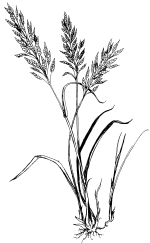
Farmland Retirement
"I hope that the tillable land today will be used for prairie grass... And right now it’s a hundred and sixty acres, and about a hundred and twenty of that is tillable land, what we’ve been farming all these years. So hopefully twenty years from now that’ll be a hundred and twenty acres of prairie grass."
Don Nelson, donor of the Engeseth-Rinde site
Most of the Engeseth-Rinde site is still being used for row-crop agriculture. The DNR plans to retire around five to ten acres a year from agriculture and plant native prairie, until most of the site is restored prairie. Twenty acres of soybeans on the east portion of the property has been left to provide habitat a healthy ecosystem for native species, especially game species.
The Koester site, which historically was used for agriculture and grazing cattle, is at a further stage of restoration. Remaining farmland is mainly planted in soy beans, which is a more suitable transition crop than corn. The northern section of the site is part of the Native Prairie Bank, a key element of prairie and savanna restoration.

Soy beans fields that will be restored to prairie in the near future.
Restored prairie in northern section of the Koester site.


